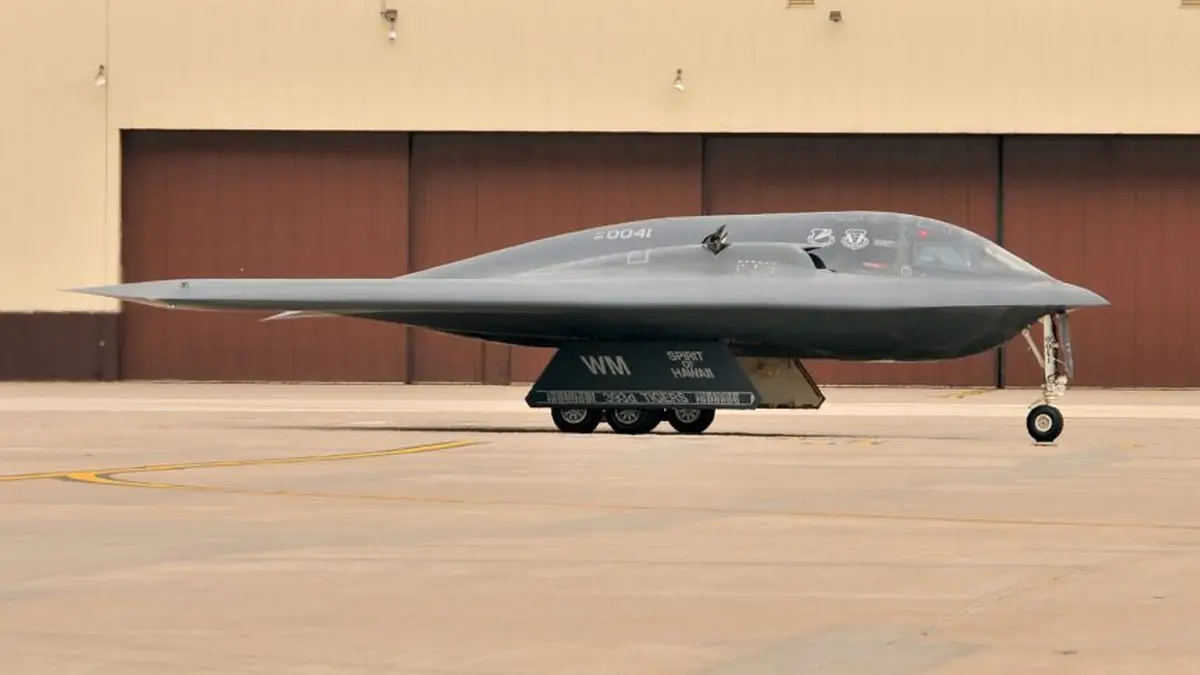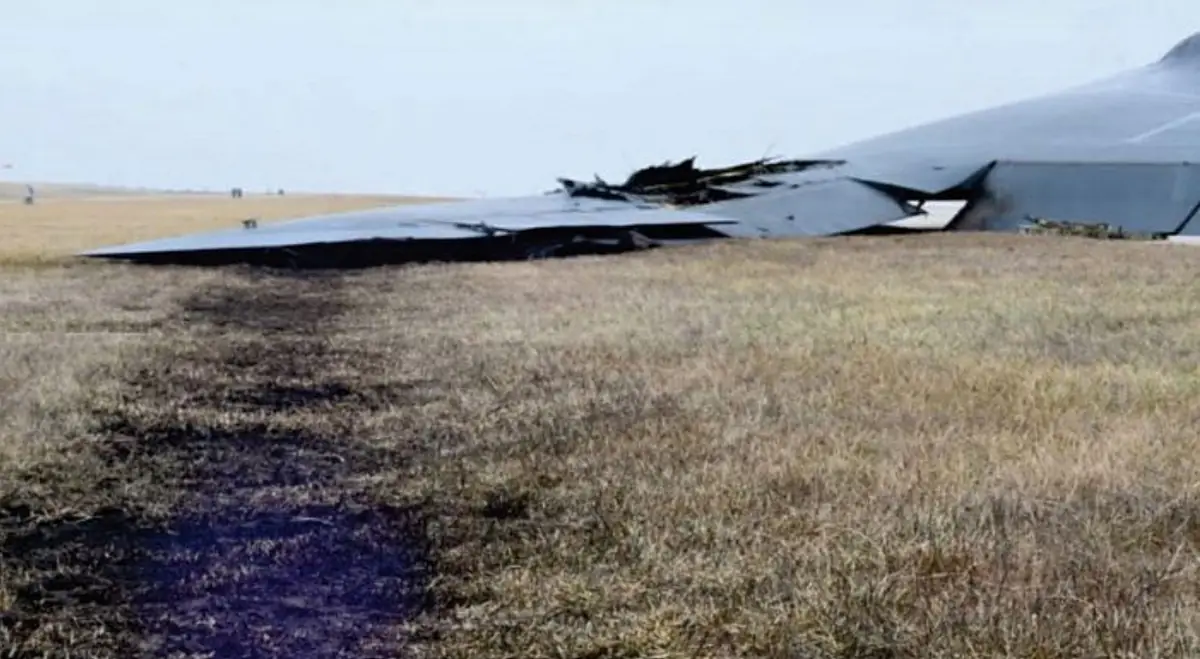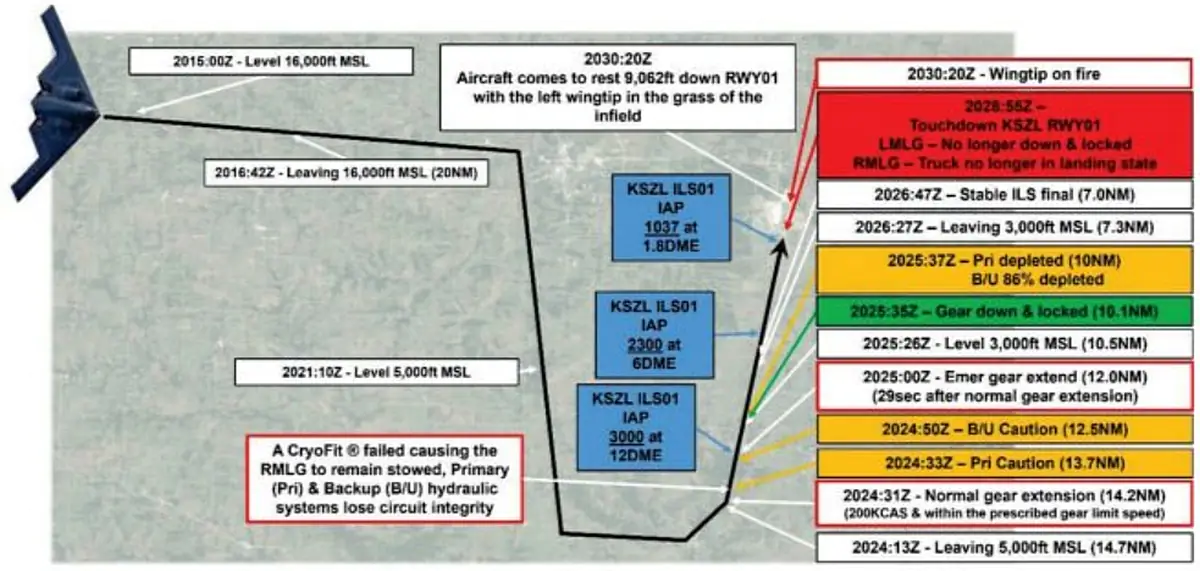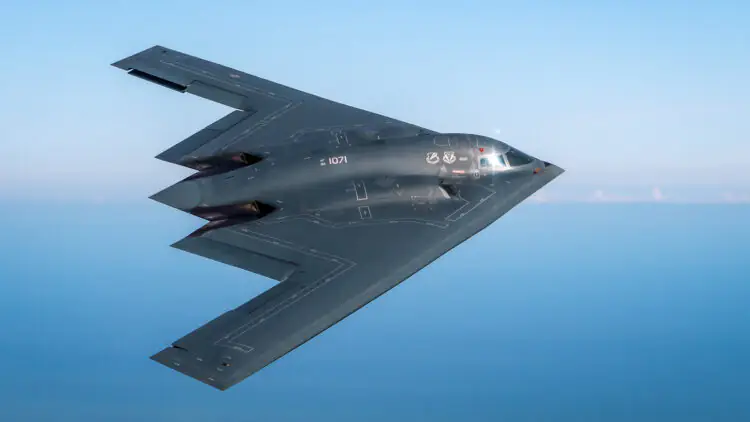The U.S. Air Force released the Accident Investigation Board (AIB) report on the B-2A Spirit incident that occurred on December 10, 2022, at Whiteman Air Force Base. The document provides a detailed reconstruction of events from approach through to the completion of firefighting efforts. The investigation identified a hydraulic fitting failure as the trigger for a chain reaction that led to the collapse of the main landing gear upon landing, wing fire, and extensive damage to the aircraft. No casualties or injuries were reported.

According to the AIB report, the aircraft with tail number 90-0041 and callsign DEATH 12 took off around 7:00 a.m. local time as a backup for a remote mission. After the primary aircraft continued its flight as planned, it returned to base. The approach to runway 01 proceeded normally until the landing gear was deployed. Immediately afterward, the system issued a major warning and hydraulic leak alert. The left main and nose gear deployed successfully, but the right main gear did not. The crew initiated the emergency gear extension procedure, after which indicators showed all three landing gear struts were down and locked, and clearance for landing was granted.
The landing occurred at approximately 14:29. Upon touchdown, the left main gear collapsed. The left wing contacted the ground, and the aircraft veered off the runway, coming to rest on the grass. The crew evacuated without injury. The AIB noted that landing parameters such as speed and load did not indicate a hard landing, focusing attention on the system’s behavior following the emergency gear deployment.
The cause was identified as the ejection of a hydraulic fitting within the sequential valve of the right landing gear. This allowed fluid to leak first from the primary system and then from the backup system, as the automatic controls switched pressure sources. As a result, the right gear failed to unlock during the normal extension procedure, forcing the crew to use the emergency gear extension. Analysis of the fitting revealed marks consistent with a one-time ejection event, with no microcracks detected.

During the emergency mode, the hydraulic pressure holding the left landing gear lock in place dropped suddenly, allowing the lock actuator to release. Upon landing, a brief pressure surge displaced the lock, causing structural failure. In other words, while the emergency gear extension resolved the right gear issue, it deprived the left system of the necessary hydraulic reserve.
When the wing contacted the ground, the skin was damaged, rupturing the left equalization tank and igniting a fuel fire that spread to the external tank. Rescue teams responded quickly, initially using water before switching to AFFF foam after three minutes. While the external flames were extinguished, heat remained inside the wing. The equalization tank exploded first, followed by the external tank, tearing off part of the skin. Only after these events were firefighters able to fully extinguish the fire, which lasted about an hour. No injuries were reported among the rescue personnel.
Damage extended to the left wing structure, control surfaces, landing gear doors, and actuators. Total losses exceeded \$300 million, with approximately $27,500 in damage to the airfield.
The AIB concluded that the root cause was a defect in the CryoFit coupling of the landing gear sequence valve, which led to pressure loss and subsequent system failure. Contributing factors included the vulnerability of the landing gear lock design during emergency extension and a delayed application of AFFF foam, which allowed the fire to spread. No faults were found on the part of the crew or maintenance personnel.

The report notes that earlier use of foam would have reduced external damage but would not have affected the internal fire within the sealed tanks, which ultimately caused the explosions. It also highlights issues with the availability of ARFF (Aircraft Rescue and Firefighting) equipment and the lack of clear procedures for breaching B-2 fuel tanks to combat fires.
Source: TheAviationist








